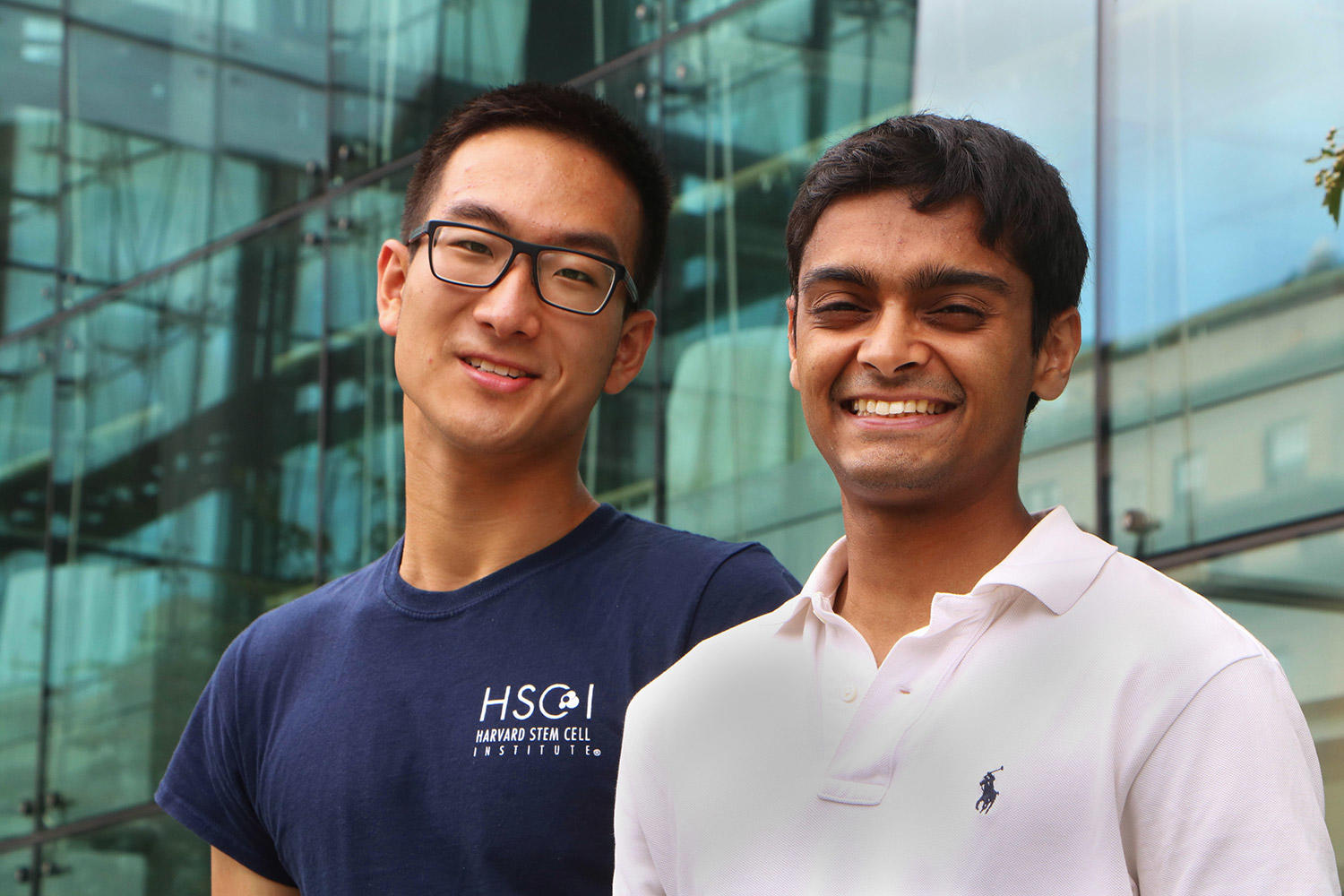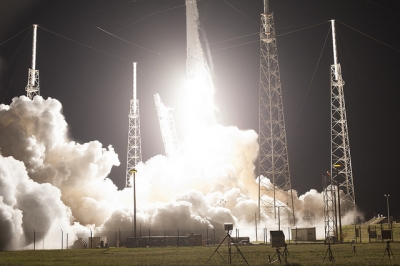
Michael Liu (HIP 2016) and Arun Sharma (HIP 2011) Photo courtesy of Hannah L. Robbins
Current and former HIP interns launch research projects on the same rocket
by Hannah L. Robbins
Mosquitos buzzed in the warm, night air at Cape Canaveral, Florida. Half past midnight on July 18, and still the spectators could not detect activity on the launch pad. In the dark, among fellow scientists and students, Harvard Stem Cell Institute Internship Program (HIP) intern Michael Liu waited.
Roughly two miles away, the SpaceX Falcon9 rocket stood ready to launch the Dragon spacecraft. Among two tons of equipment for the International Space Station (ISS) and scientific supplies for more than 250 investigations, was a capsule of roundworms — part of the materials in Liu’s experiment.

“The quality of students we attract to the HSCI summer internship program is incredible,” said HIP Co-Director William Lensch, PhD. “Arun and Michael are stellar examples of the dedicated, brilliant, and bold young minds that make our program great. I am so proud of them!”
Sharma said his summer at HSCI changed the trajectory of his career. As a son of scientists, Sharma knew he wanted to be a scientist and study cardiology, but it wasn’t until he started a project in his HIP mentor Dr. Anthony Rosenzweig’s lab that he slightly altered his course.
“That was my first taste of stem cell biology, and I was so excited by my HIP experience and the things I learned, I decided to pursue it as a career path. I decided to become a stem cell biologist,” said Sharma.
During HIP, Sharma learned the lab techniques that served him as a graduate student at Stanford University, where he improved on the processes and protocols that labs use to make heart muscle cells from induced pluripotent stem cells (iPSCs). Now, Sharma can mass-produce these cells, making millions and millions that connect in a circular sheet about 3cm across and beat in sync.
“It feels like it was just yesterday,” said Sharma. “Time really flies, and now so do my cells.”
Sharma and his colleagues are sending beating heart muscle, grown from iPSCs, into space to see how the cells respond to microgravity and the return trip to Earth.
“The heart is normally a fist-like shape,” said Sharma, “but in a microgravity environment it makes more of a spherical shape. We know what happens to the heart at the tissue level and the organ level, but we want to know what happens at the cellular level.” This is of particular interest in the heart since its cells do not divide and replenish themselves in the body during a person’s lifetime so understanding more about how they maintain themselves in conditions like microgravity is critical to understanding heart health.
NASA astronaut Kate Rubin, PhD, the microbiologist taking care of Sharma’s heart cells on ISS, will be measuring the change in the cells’ beat rates, size, shape, and gene expression.
Though he is now interested in studying the central nervous system, Michael Liu began working on his muscle project before his acceptance to Harvard College and to the HIP program. Liu and his former high school classmates will study the effects of microgravity on the muscles of roundworms, with the hopes of learning something about the muscle atrophy experienced by astronauts during extended missions in space and about muscle wasting more generally.
“I don’t want this to be the end of the road in terms of space. Having gone to the launch and the space museum and talking to the scientists and astronauts involved. That’s something I would love to be a part of in the future,” said Liu. Sharma shares Liu’s continued interested in space research.
That two HIP participants have projects aboard ISS at the same time is “a great and happy connection,” said HSCI Co-Founder Doug Melton, PhD, “and a testament to HSCI giving youngsters the confidence to think big."
